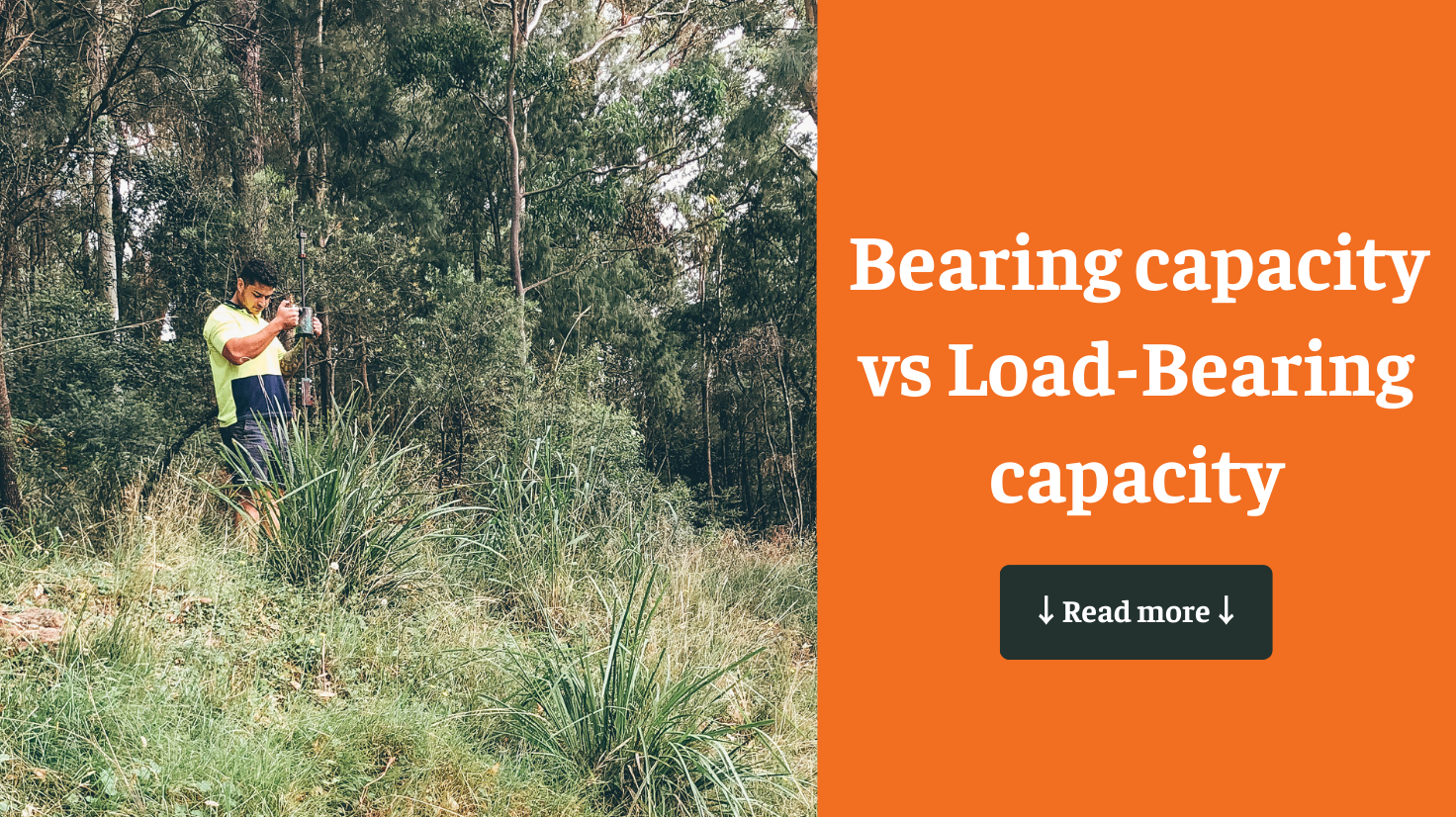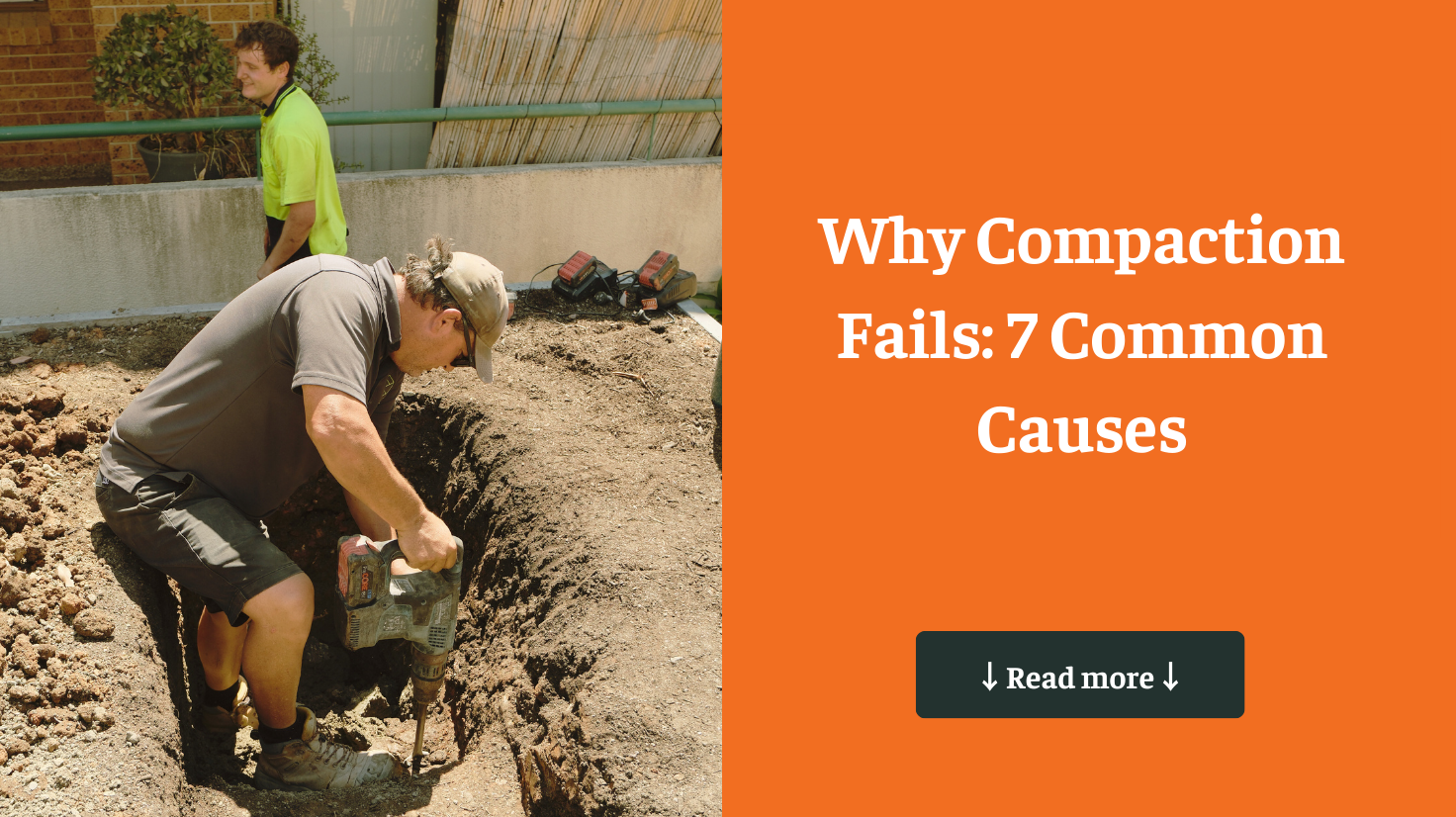Knowing the difference between bearing capacity vs load-bearing capacity for construction projects is essential in construction. These two terms, though related, play distinct roles in project planning and execution. This article explains how each term impacts the design and stability of construction projects.
1. Definition of Bearing Capacity
In construction, bearing capacity refers to the ability of soil to support the loads applied by a structure’s foundation. This is a crucial factor in determining whether the soil at a specific site is suitable for construction. If the bearing capacity of the soil is too low, it can lead to problems like excessive settlement, foundation movement, or even collapse.
Several factors affect the bearing capacity of soil, including its type, moisture content, density, and depth. Weak soils, such as clay and silt, generally have lower bearing capacities and may require special stabilisation techniques to support heavier structures. Testing methods such as the Standard Penetration Test (SPT) or the Plate Load Test are used to determine the soil’s bearing capacity before construction begins.
2. What is Load-Bearing Capacity?
Load-bearing capacity relates to the structural components of a building, such as walls, beams, and columns. It refers to the maximum load that these components can safely support without experiencing failure. Unlike soil bearing capacity, which focuses on the ground beneath the structure, load-bearing capacity concerns the integrity of the building itself.
The load-bearing capacity of a structure depends on several factors, including the materials used (e.g., steel, concrete, timber), the design of the building, and how loads are distributed across the structure. Ensuring that a structure can support both its own weight and external forces, such as wind or seismic activity, is essential to avoid failure.
3. Importance in Project Planning
Understanding both soil bearing capacity vs load-bearing capacity is essential in the early stages of construction project planning. Both factors influence key decisions, including the type of foundation, the materials used for construction, and the overall design of the structure.
When the soil at a construction site has a low bearing capacity, solutions such as deep foundations, soil compaction, or stabilisation methods may be required to support the structure. At the same time, ensuring that the structure itself has sufficient load-bearing capacity will prevent structural failure due to overloading. Proper planning and testing during the initial phases of a project are vital to avoid costly mistakes and ensure a safe and stable building.
4. Key Differences
To better understand the difference between bearing capacity and load-bearing capacity, here’s a comparison:
Aspect | Bearing Capacity | Load-Bearing Capacity |
Definition | The soil’s ability to support the loads applied by a structure’s foundation. | The structural components’ ability to withstand applied loads without failure. |
Focus | Soil and its properties, such as type, density, and moisture content. | The structure’s materials, design, and how loads are distributed across the building. |
Testing Methods | Standard Penetration Test (SPT), Plate Load Test, or Cone Penetration Test (CPT). | Structural analysis, stress tests on materials like steel, concrete, and timber. |
Consequences of Failure | Foundation settlement, cracks, or collapse due to insufficient soil strength. | Deformation or collapse of walls, beams, or columns due to overloading. |
Application | Determines the type of foundation required (e.g., shallow or deep foundations). | Ensures the building can safely support its own weight and external loads. |







